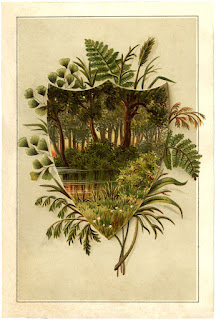I love the genealogy series Finding Your Roots. I recently binge watched it. But while it's just stating facts when someone, even Henry Louis Gates, Jr. says it, I tend to question how poor someone was when I hear that a laborer came over with only $6. because that's what's recorded on a ship manifest/ passenger list. We start to think $6 will buy us a burger and fries instead of the value back in the day.
That's the amount declared. Noone was going through his socks or shoes or money belt or that secret compartment in his one suitcase. Or in her undies or babies' diaper. I'm sure lots of things were kept safe by being sewn in to clothing.
I know how we think of steerage passengers. Early films and photos don't tend to depict thin gentleman in suits strolling along with their luggage being transported by a worker. They show fat women with scarved heads, their worldly possessions all bundled up in sheets. The motion of the film suggests they move awkwardly (you would too carrying a heirloom carpet on your back) and as quickly as possible (Gotta get that train to Pittsburgh.) It doesn't help that the words on the Statue of Liberty suggest she's a beacon for the bedraggled. But am I to believe the ignorant were stupid? How it is then that so many of the descendants of these passengers have made their way through college, into professions, and some have earned PhDs? Three or more generations in America makes a difference but so does inherited genius.
No doubt third class tickets/ steerage and poverty tended to go hand in hand. But sometimes it's just that a person was cheap or wanted to spend less on a ticket and have more in the pocket.
It's also true that the tickets were often purchased by family already in America and striding those fabled streets of gold while breaking their backs in mines and factories. Men first, wives later.
There is only one thing to do in order to better wrap your mind around just how much money a person brought with them on the ship that they declared. Use an online inflation calculator that turns that $6 in 1901 into 2021 U.S. Dollars. (The U.S. Department of Labor has one.)
Ok, it's not perfect in predicting value because prices fluctuate but it's the best.
Ever wonder who figured out what the dollar value was when the immigrant had left with Italian, German, or Austrian money? When and where would he convert that into American dollars?
According to one such online calculator $6 in 1901 is about $184 dollars today.
Let's do another example. $25 in 1914 is $650 today.
Another. $65 in 1921. $945 today.
You get the idea.
The inflation calculator is so useful.
Using census information you can calculate rent, mortgage, home value, and get a better idea about your ancestors money. If your Ellis Island ancestor goes to a house that he owns or pays a high rent on, what does that tell you?
I'm going to go on a little about the cost of tickets here too.
You may want to look over a short paper online that was presented in 2012 at a gathering of the Economic History Association in Vancouver by Brandon DuPont, Drew Keeling, and Thomas Weiss. Its called Passenger Fairs For Overseas Travel In The 19th and 20th Centuries.
The report mentions that advertisements for fares didn't give particulars - the company might actually quote higher or lower. Fares varied by direction - West higher, luxury of design and location of cabin space (ocean view or inside with none) speed of the ship, and other factors. Some ships converted cabins into third class to profit by quantity. A head tax on incoming passengers generally made west travel on the Atlantic a bit more expensive than east. (Where are the outgoing passenger lists for New York?)
There were four major carriers, CUNARD line generally most expensive. Cunard's star attractions and most expensive travel being the three sister ships - the Lusitania (which got torpedoed and sunk), Mauritania (called The Grand Old Lady), and the Aquitania.
Holland-America, and North German Lloyd line were two others in The Big Four.
I learned about another line I hadn't known about called Anchor. It was the least expensive. You might think of it as a steamship equivalent of Jet Blue.
The authors of this paper do a lot of statistics but overall they play with the discrepancy between advertised prices and profits.
So let's use that inflation calculator on some suggested fares from that report and see just how expensive ocean travel was in 1908.
$151 on The Grand Old Lady going east is $4275. Highest fare. (We can assume people of wealth paid that ticket price.)
Cheapest first class on that ship was $121. $3425 today.
Cheapest ticket on that ship was $54. Now $1528. (I assume steerage.)
Holland America average fare using all ticket classes $141. $3992.
Holland America cheapest ticket west was $41. $1160.
North German Lloyd cheapest ticket was $70 west. $1981. (If your ancestors left a German port there's a good chance they took this line.)
Anchor cheapest ticket was $62 west. $1755.
I think it's fair to say that a typical Passenger in steerage, scarf, carpet, and all began their trip to America with a personal net worth of more than many an American today who gets government EBT / Food assistance. They were better off than our homeless.
(I look forward to learning if the companies charged less for children and babies.)
C 2021
This post is part of a series that focuses on Ellis Island immigrants.





